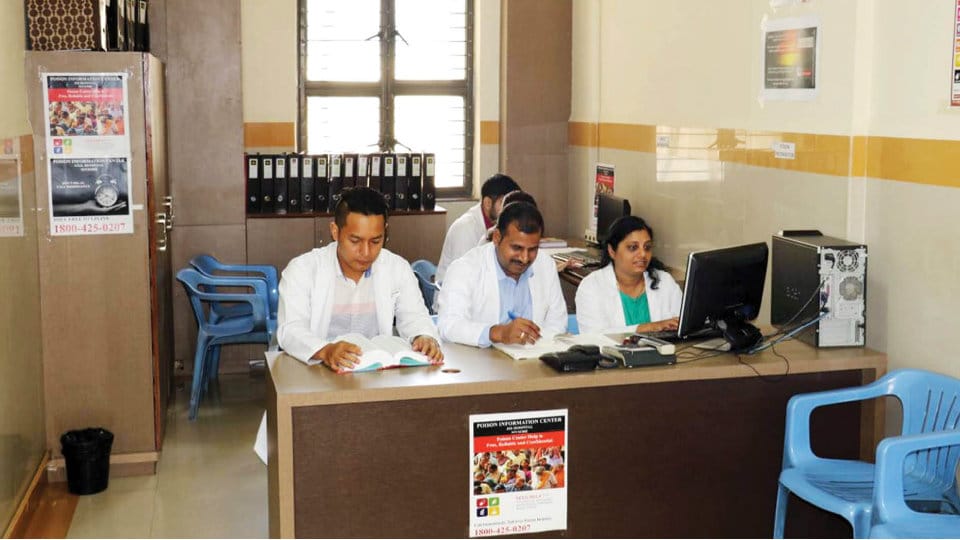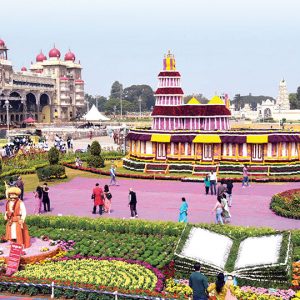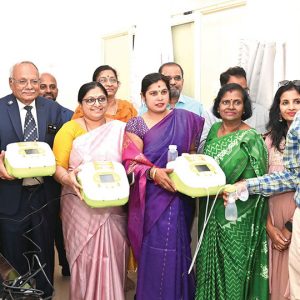By Dr. M. Suresh Babu and Dr. L. Umesh
The society watched with horror the prasadam poisoning in the mass food poisoning case in Kichuguth Maramma Temple at Sulwadi village of Hanur taluk recently where over 17 people died and many more were admitted to various hospitals.
Sadly, some people lost their lives even before they could get access to medical management. Samples of the prasadam forwarded to the forensic team had traces of Organophosphate Poison (OP) capable of causing critical damage to human beings. Here is a review of Organophosphate Poisoning seen in our day-to-day practice.
Organophosphate poisoning is one of the most common causes of poisoning worldwide. Organophosphates are used as insecticides and organophosphate poisoning occurs most commonly as a suicide attempt in farming areas of the developing world and less commonly by accident. The case fatality rate is more than 15%. The range of toxicity of different Organophosphate poisons is as follows:
Highly toxic: TEPP, Phorate, Mevinphos, Fensulfothion, Demeton, Parathion, Fonophos, and Monocrotophos.
Intermediate toxic: Coumaphos, Crotoxyphos, Fenitrothion and Ronnel.
Low toxic: Malathion, Fenthion, Abate, Chlorpyrifos.
The poison that was used in the prasadam poisoning case was the highly toxic Monocrotophos.
The route of poisoning is through ingestion, inhalation and dermal contact. And the onset of action is oral: within 2 hours; dermal: delayed up to 12 hours and inhalation: Within 30 minutes of exposure.
Common signs and symptoms of acute toxicity
DUMBELS: Diarrhoea (loose motion), Urination, Miosis (constriction of pupil), Bronchospasm (breathlessness), Emesis (vomiting), Lacrimation and Salivation. Other common signs and symptoms include muscle fasciculations and weakness, seizures, respiratory depression and decreased heart rate. Symptoms may occur within 5 minutes following a large ingestion and death is possible within 15 minutes. Most patients will be symptomatic within 8 hours of exposure, nearly all within 24 hours.
Children often do not present with the classic DUMBELS syndrome. More commonly, they experience Central Nervous System (CNS) effects with seizures, lethargy, stupor, coma, muscle weakness and flaccidity.
Mechanism of Toxicity: Organophosphates cause irreversible inhibition of cholinesterase enzymes, resulting in excess accumulation of acetylcholine at muscarinic and nicotinic receptors, and in periphery and CNS. Signs and symptoms of organophosphate poisoning are an expression of acetylcholine excess at a variety of nerve terminals.
Monitoring parameters: Pulse rate, pseudocholine esterase, blood gas analysis, pupil size and delirium.
Treatment: Gastric lavage is recommended (generally within 60 minutes).
Contaminated clothing has to be removed with regular body wash. Immediate life-threatening complications, for example, airway, breathing, and circulation have to be managed. The most common serious complications are seizures, seizure-related hypoxia, and respiratory failure. A clear airway has to be established and excess secretions have to be suctioned. Adequacy of oxygenation, close monitoring for sudden respiratory failure have to be ensured. Patients with significant bronchial secretions, severe muscle weakness, or significant CNS depression should receive supplemental oxygen and be intubated early if necessary.
Specific antidote: Atropine/ Glycopyrrolate.
Complications of Exposure
Immediate: Cholinergic crisis within 24 hours with respiratory failure.
Intermediate: Intermediate syndrome occurs 24-96 hours after exposure, characterised by acute respiratoryparesis and muscular weakness (primarily facial, neck, and proximal limb muscles), sometimes with cranial nerve palsies.
Late: Delayed polyneuropathy weakness/paralysis and paresthesia of the extremities (primarily legs) may persist for weeks to years.
Chronic effects: Long-term neuropsychiatric sequelae with decrease in memory and concentration and mood disturbances.
24×7 poison Information Centre at JSS Hospital
Poison Information Centre (PIC), established at JSS Hospital for the first time in Mysuru by Department of Clinical Pharmacy, JSS College of Pharmacy, Mysuru, is actively involved in providing poison information services to the general public and doctors for patient care. PIC is also involved in creating awareness and educating the public regarding proper storage and safe handling of poisoning substances.
Below is the list of common poisoning agents seen in accidental and intentional poisoning in and around Mysuru district which are most widely reported to JSS hospital:
Pesticides: (Organophosphates, Aluminium Phosphide, Zinc Phosphide, pyrethroids and carbamates).
In poisonous household products: (Phenyl, bleaching powder, Cypermethrin (Laxaman Rekha cockroach repellent), caustic soda, hair dye, nail polish remover).
In Hydrocarbons: (Kerosene, petrol).
In Medicines: (Benzodiazepines, analgesics, antidepressants and barbiturates).
Environmental poisoning: (Snake bite, scorpion bite, stings and insect bite).
The well-trained staff at JSS Hospital PIC will provide appropriate information regarding management and first-aid measures of various poisoning substances. Poison information services are provided at free of cost round-the-clock. The information will be provided through Toll Free Number: 1800-425-0207 and 24×7 Mob: +91 6363539153, e-mail: [email protected] and in person based on enquirer’s request.
JSS Hospital PIC has also started an app (available on Google Playstore) for the first time in Karnataka which is monitored by JSS Academy of Higher Education and Research (JSS AHER) in JSS Hospital, Mysuru, where you can download it free of cost and register and get access to all the treatment protocols and first-aid treatment for different kind of poisoning substances at your finger tip. For any information on poisoning substances and its treatment one can contact us at: www.picjsscpm.jssuni.edu.in
[Dr. M. Suresh Babu is the Deputy Director & Professor of Medicine at JSS Hospital and Dr. L. Umesh is Lecturer in the Department of Pharmacy Practice, JSS College of Pharmacy, Mysuru]








Recent Comments